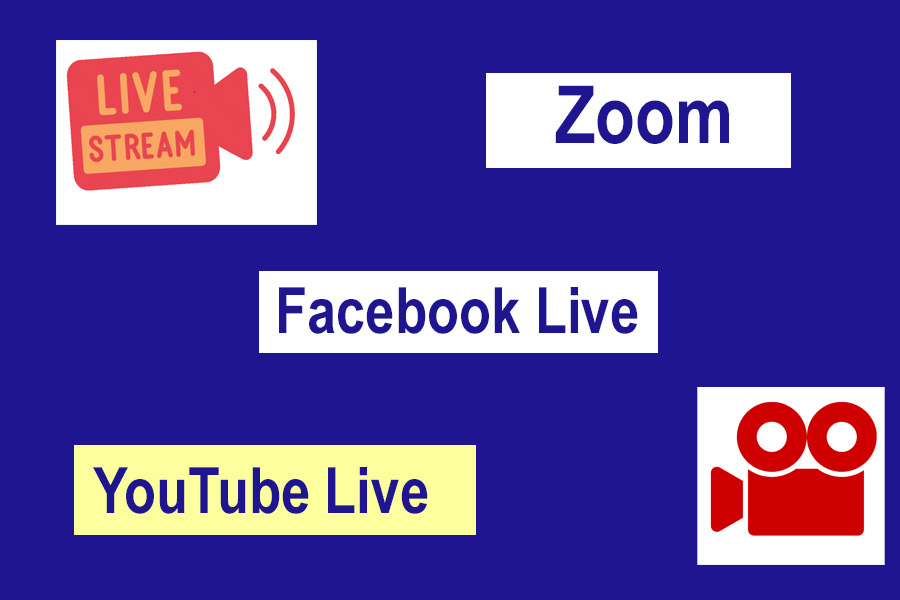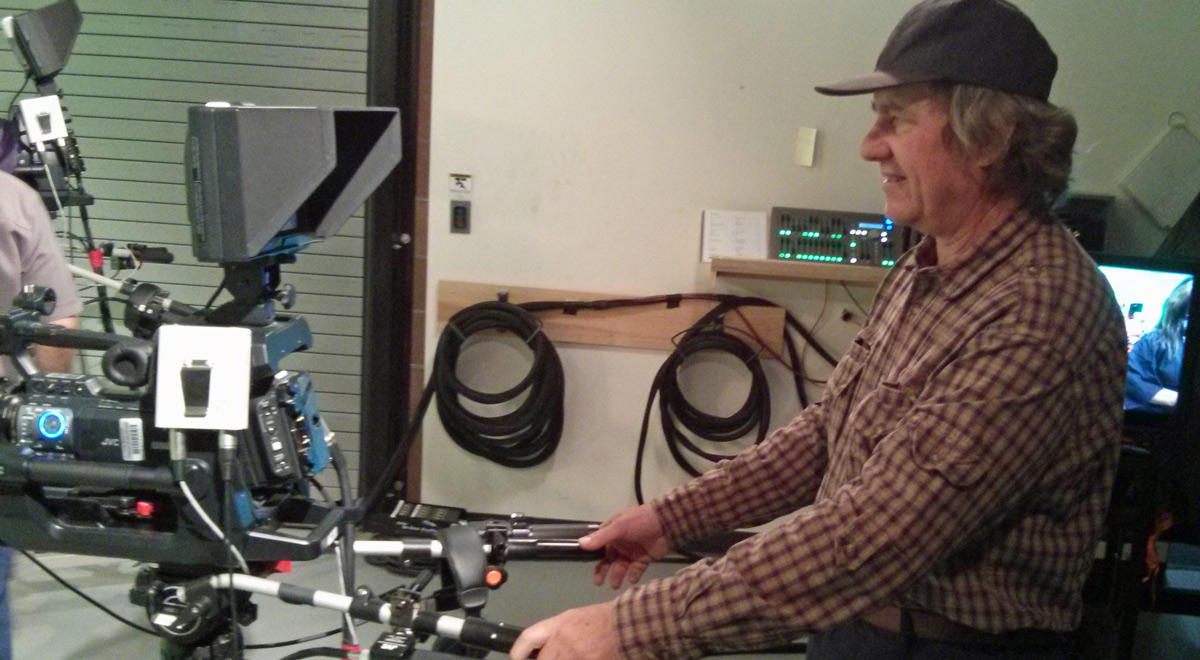Tips For Video Streaming
Tips For Video Streaming, broadcasting, and live streaming for business and entertainment
My New List of Tips For Video Streaming that is Online live video streaming and multicasting (simulcasting) to social video platforms.
I am now using newer streaming services that do not require a Gmail or Google account. However, you still need to use a Chrome browser.
A little about live streaming, when video streaming was more complicated.
I first created the Tips For Video Streaming post back when Google plus was fairly new. Back then streaming was a lot more complicated and people often had a lot of problems. I would usually do a test video before the broadcast. This was to make sure guests could get online, that they had all the required plugins installed, and that they had their equipment set up properly.
Now it’s much easier to join a video stream and to produce them as well. Back then I would often need to help people get their computers ready to do streaming video. It was a bit more primitive than today’s streaming environment. That being said, some of the streaming systems (Zoom) still require downloading apps for the best experience.
While it’s now quite easy to do live video, there are still some basics that make the whole experience better and safer.
Some Zoom calls are just horrid, and using these procedures will improve your call quality and will make Zoom more tolerable. Better audio quality will make your listeners more resilient to Zoom fatigue.
As with many video productions, the pre-production for video streaming (Google+ hangout, Zoom, and others) can be as important as the actual event. To ensure you get the most of your time with me I have come up with several items that will increase the chance of a smooth, professional, and trouble free video stream.

While online streaming video (zoom, etc.) can be informal they are also a powerful communication medium. Whether done as a broadcast or narrowcast, online video chats deserve the time and preparations to ensure we get the most out of them.
My new 19 point Tips For Video Streaming Checklist for doing live video broadcasts and livestreams.
These rules apply universally across platforms and apps. There are so many different kinds of apps and software now that at some point you’ll be using a variety of streaming platforms. The last 5 rules in the checklist are for your safety and security.
- Use a Chrome browser.
- Wear headphones (or earbuds) to avoid audio feedback.
- If possible use an external microphone. If you are in a particularly noisy environment, let me know before the planned show day. I can often modify audio to improve the quality.
- Use a fast internet connection to avoid lag and improve quality. For a more reliable connection, connect your computer to your modem with an Ethernet cable.
- You will need good front lighting. Avoid shadows on your face. Frame your face and make sure there are no strong light sources behind you.
- Evaluate your background. Do not have any objects, music, TV shows, or other items behind you that may be copyrighted. It is especially easy to overlook background objects. Background music can also pose a big copyright problem.
- Use A Quiet Location. Remove as much background noise as possible. Turn off fans, alarms, and if streaming from home avoid using the microwave or other appliances with buzzers or alarms. Conduct your live video away from appliances that make noise, such as refrigerators.
- If at all possible, use laptop or desktop.
- If using a laptop plug in your computer.
- You will be on camera please dress appropriately. Zoom has made being totally underdressed less common.
- Join the video early. All video participants should come into the video room early so we can make sure everything is set up and working properly, as well as discuss last minute details.
- Plan on having a practice session to test equipment, settings, and discuss the flow of the show.
- Contribute supporting material to enhance visuals – If you contribute supporting assets such as photos and video with a copyright release it will allow me to create a more compelling video about you and what you do. You can also add these to the show from your computer through your browser.
- Turn off phones and other distracting devices.
- Close all sensitive documents, bowsers, and bowser tabs. This will help prevent you from sharing sensitive or private information unintentionally
- Don’t make off air phone calls or answer the phone, even if you are in a guest room waiting to get on-air. Again we do not want to leak any sensitive information accidentally.
- Don’t multitask on a project not related to the stream.
- Best practices is to have an ON AIR sign or light to remind everyone you are broadcasting. You don’t want a colleague coming in and blurting out sensitive information.
- If sharing documents or doing a screen share make sure there is no sensitive data exposed. Check all documents, slides, shared assets before the stream. Have a system for checking off the suitability of assets you plan to share.
Following is my original 15 steps Tips For Video Streaming Checklist for Google Plus Hangout Broadcasts.
Back in the day I put together the hangout pre-production Tips For Video Streaming checklist to help my guests and others have an effective online video experience.
1
Online streaming video checklist (old Google Hangout checklist:) Now many video streaming platforms work through your browser without any additional plugins. However, some like zoom will give you a much better user experience if you download their software. Each participant must use a Chrome browser, have a video camera and microphone (headphones, earbuds, etc.) This is a video chat.
2
[(In the old days with Google Plus) You needed to install the talk extension/plugin.] Now you may need to download a bit of software. If you are a guest on my show there is NO software download required, but you do need a Chrome browser.
3
Wear headphones (or earbuds) to avoid audio feedback. – If you don’t use headphones other guests will hear themselves and get echo through your speakers. Unless you are using an audio mixer. The software now available has reduced the echo and assists in other noise cancellation, but at a cost of reducing audio quality.
4
Use an external mic if possible. A headset with both a mic and headphones usually works fine.
5
Use a fast internet connection to avoid lag and improve quality. For a more reliable connection connect your computer to your modem with an Ethernet cable. Try not to use Wi-Fi. If you must use Wi-Fi use the fastest connection possible. The better the connection the better the audio and video quality.
6
You will need good front lighting. Avoid shadows on your face. Frame your face and make sure you’re not backlit. If there is too much light behind you try placing a lamp to the left or right side of your face.
7
Important
Think about your background. Do not have anything that is copyrighted in the video. It is especially easy to overlook background objects.
YouTube is getting stricter with this requirement. One of the main reasons for copyright concerns is that many of the video podcasts I do will also be aired on public television. It cannot contain anything with a copyright unless I get a release.
You will also need to sign a model release and possibly a location release as well as a copyright release if we are using any of your media assets or promotional material. I cannot publish on public access TV without these documents.
8
Try to make fairly small movements on camera. It’s best to avoid making fast movements. Modern technology is better at dealing with fast movements, but it is still best to be somewhat constrained. I am no longer worried about this one.
9
Quiet location. Remove as much background noise as possible. If you have a lot of dogs barking in the background we may be able to find a solution in a practice session. Hey, I’m a dog trainer. However, you should let me know this may be an issue. Other industries may have other predictable noise problems.
Turn off and silence all phones and other devices that may interrupt the broadcast. This is an important meeting you are communicating with your customers, investors, and media.
Turn off fans and stream away from appliances that make noise, such as refrigerators.
10
You need to use either a laptop or desktop. Mobile devices will not work as well. This was true of the old Google hangouts, now technology is much more robust and many devices can work in a pinch. But it is best to use a computer with a dedicated web camera and microphone.
11
You will be on camera so please dress appropriately.
12
Plug in your computer. Especially important for laptops that have not been fully charged.
13
Arrive early. Everyone involved with the video should arrive early to make sure everything is set up and working properly as well as discuss last minute details. This pertains to the host, guests, and if applicable the production team. This was a lot more important in the old day of a few years ago when there were a lot more technical problems at the time of the actual event.
14
Be prepared to have a practice hangout to test equipment, settings, and discuss the flow of the hangout. Again, this was a lot more important when tech issues had to be overcome or where we had to find work arounds. Now it is pretty much a one click to join process for streaming video. But as those who spend much time on Zoom know, there is still plenty that can go wrong with a live stream.
15
Contribute supporting material – photos and video clips with a copyright release so I can make a compelling video about you and what you do. If I am doing a promotional video for you this is still important.
I hope this helps my guests, others looking for hangout information, and my social media friends.
For more information visit the page for Video Production.
I am wishing you the very best in life,
Andrew Ledford
My On The Road
562-606-1729

